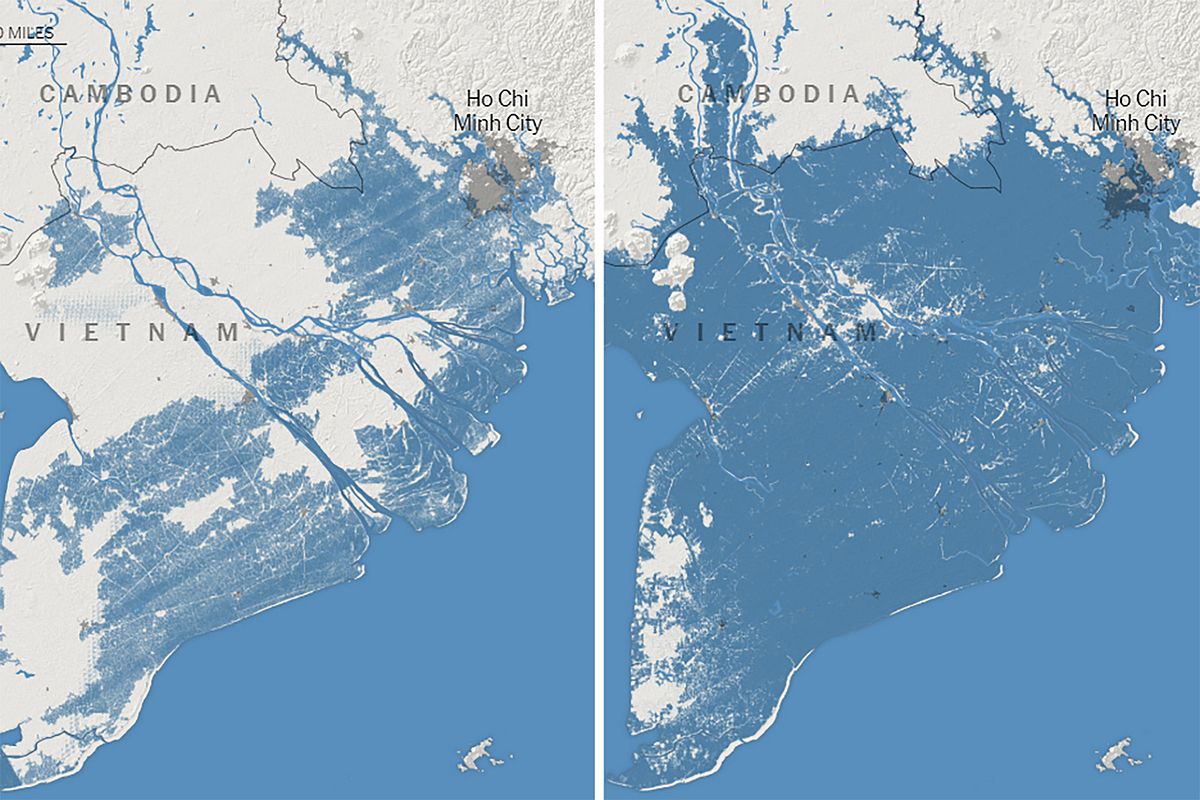A new research paper from Climate Central reveals an even more harrowing future for coastal cities around the world, including in Vietnam, compared to previous predictions.
The new research, which was published as a peer-reviewed paper on the Nature Communications journal and a report on Climate Central's homepage, employs a more accurate methodology for measuring land elevation, titled CoastalDEM. Using this new calculation model, researchers found that many coastlines around the world are far lower than previously thought, and thus rising sea levels could affect three times more people in future decades than previous forecasts.
The New York Times reports that with this new measure, almost all land in southern Vietnam, reaching as far as Saigon and Vung Tau, will be below the high tide line by 2050. This means that the region will disappear by mid-century, displacing 20 million people. In the comparison above, on the left is an old projection of what the Mekong Delta will look like in 2050 and the new forecast is on the right.
“China, Bangladesh, India, Vietnam, Indonesia, and Thailand are home to the greatest number of people who today live on land that could be threatened by permanent inundation by 2100—151 million in total, and 43 million in China alone,” the report on Climate Central says.
The research also calculates the land at risk of annual ocean floods, which is defined as areas predicted to be below the average annual coastal flood levels. The regions that will receive the most flooding from sea level rise are concentrated in Asia, notably China, Bangladesh, India, Vietnam, Indonesia and Thailand, as these countries have the most people living on land that is below coastal flood levels.
An interactive map produced to visualize the data created by CoastalDEM shows that by 2050, the entirety of southern Vietnam is at risk of annual coastal flooding.


Areas at risk of annual coastal floods.
In northern Vietnam, some of Hanoi’s coastal areas, along with Hai Duong, Thai Binh, Nam Dinh, Ninh Binh and Hai Phong, will face annual ocean floods by 2050. This is also the case for many areas on the north-central coast and the central region, such as Thanh Hoa, Nghe An, Ha Tinh, Quang Tri, Hue, Da Nang and Quy Nhon.
There are, however, several limitations to the study. The CoastalDEM model tends to underestimate population exposure, and thus the findings might have actually underestimated the size of populations which will be exposed to flooding. It also relies on population data from a 2010 land scan and leaves out changes in migration trends.
The research also leaves out recent findings on ice sheet sensitivity accelerating the rate of rising sea levels, and assumes that the world will moderately reduce carbon emissions roughly in accordance with the 2015 Paris Climate Agreement. Protective features are not incorporated in the study, and there could be marginal errors in the height of annual floods.
[Top image via New York Times]














